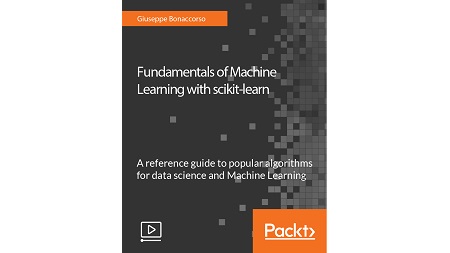English | MP4 | AVC 1920×1080 | AAC 48KHz 2ch | 2h 33m | 422 MB
Build strong foundation for entering the world of Machine Learning and data science with the help of this comprehensive guide
As the amount of data continues to grow at an almost incomprehensible rate, being able to understand and process data is becoming a key differentiator for competitive organizations. Machine Learning applications are everywhere, from self-driving cars, spam detection, document searches, and trading strategies, to speech recognition. This makes machine learning well-suited to the present-day era of big data and data science. The main challenge is how to transform data into actionable knowledge.
In this course you will learn all the important Machine Learning algorithms that are commonly used in the field of data science. These algorithms can be used for supervised as well as unsupervised learning, reinforcement learning, and semi-supervised learning. A few famous algorithms that are covered in this book are: Linear regression, Logistic Regression, SVM, Naive Bayes, K-Means, Random Forest, and Feature engineering. In this course, you will also learn how these algorithms work and their practical implementation to resolve your problems.
An easy-to-follow, step-by-step guide that will help you get to grips with real-world applications of algorithms for Machine Learning.
What You Will Learn
- Acquaint yourself with important elements of Machine Learning
- Understand the feature selection and feature engineering process
- Assess performance and error trade-offs for Linear Regression
- Build a data model
- Understand how a data model works
- Understand strategies for hierarchical clustering
- Ensemble learning with decision trees
- Learn to tune the parameters of Support Vector machines
- Implement clusters to a dataset
Table of Contents
Introduction to Machine Learning
1 The Course Overview
2 Machine Types and Learning Methods
3 Data Formats
4 Learnability
5 Statistical Learning Approaches
6 Elements of Information Theory
Feature Selection and Feature Engineering
7 Splitting Datasets
8 Managing Data
9 Data Scaling and Normalization
10 Principal Component Analysis
Linear Regression
11 Linear Models and Its Example
12 Linear Regression with scikit-learn
13 Ridge, Lasso, and ElasticNet
14 Regression Types
Logistic Regression
15 Logistic Regression
16 Stochastic Gradient Descent Algorithms
17 Finding the Optimal Hyperparameters
18 Classification Metrics
19 ROC Curve
Naive Bayes’#
20 Bayes’ Theorem
21 Naive Bayes’ in scikit-learn
Support Vector Machines
22 scikit-learn Implementation
23 Controlled Support Vector Machines
Decision Trees and Ensemble Learning
24 Binary Decision Trees
25 Decision Tree Classification with scikit-learn
26 Ensemble Learning
Clustering Fundamentals
27 Clustering Basics
28 DBSCAN and Spectral Clustering
29 Evaluation Methods Based on the Ground Truth
Hierarchical Clustering
30 Agglomerative Clustering
31 Implementing Agglomerative Clustering
32 Connectivity Constraints
Introduction to Recommendation Systems
33 Naive User-Based Systems
34 Content-Based Systems
Resolve the captcha to access the links!
